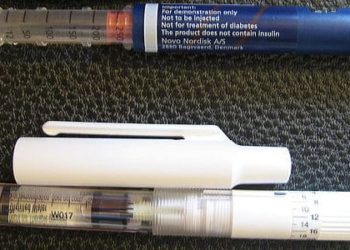Tramadol use linked with increased risk of hypoglycemia hospitalizations
1. When compared to codeine use, tramadol was associated with an increased risk of hospitalization for hypoglycemia in patients with non-cancer pain.
2. The highest risk of hospitalization occurred within the first 30 days of tramadol initiation.
Evidence Rating Level: 3 (Average)
Study Rundown: Use of the weak opioid tramadol has been increasing worldwide. However, case reports have detailed instances of hypoglycemia associated with its use. Given the morbidity and potential mortality associated with hypoglycemia, it is important to further understand this potentially dangerous association. This study aimed to determine whether use of tramadol for non-cancer pain, when compared to codeine, was associated with increased risk of hospitalization for hypoglycemia.
This nested case-control study found that tramadol use was associated with a 52% increased risk of hospitalization for hypoglycemia when compared to codeine use. This risk was particularly elevated in the first 30 days after starting treatment. This significantly increased 30-day risk remained robust through both nested case-control and case-crossover analyses.
Strengths include being a large, population-based, nested case-control study which used a thorough administrative database and thus allowed for adjustment of many relevant confounders. Also, with the use of an active comparator, like codeine, and using both cohort and case-crossover secondary analyses ensure for higher validity. However given that this is an observational study that used administrative database information, further residual confounding needs to be considered.
Click to read the study, published today in JAMA Internal Medicine
Relevant Reading: Severe hypoglycemia and risks of vascular events and death
In-Depth [case-control study]: This large, population-based nested case-control study used data from the UK Clinical Practice Research Datalink (CPRD) and Hospital Episode Statistics (HES) databases. These databases include information on patient diagnoses, prescriptions, referrals, lifestyle habits and BMI. A cohort of patients who newly received oral tramadol or codeine for non-cancer pain between April 1998 and March 2012 was created. Within this cohort, cases included all patients with a first hospitalization for hypoglycemia and were matched to up to 10 controls from the cohort on age, sex and duration of follow-up. Exposures of tramadol vs. codeine were determined at the index hospitalization. Conditional logistic regression adjusted for a thorough number of baseline covariates was used to estimate odds ratios.
Of the 334,034 people included in the study cohort, 1105 had hospitalization so for hypoglycemia and they were matched to 11,019 controls. Compared to codeine use, tramadol was significantly associated with hospitalization for hypoglycemia (OR 1.52, 95% CI 1.09-2.10). This risk was particularly high in the first 30-days after tramadol initiation (OR 2.61, 95% CI 1.61-4.23). These results remained robust through cohort and case-crossover analyses (HR 3.60, 95% CI 1.56-8.34 and OR 3.80, 2.64 to 5.47, respectively).
More from this author: Overall US diet quality improved from 1999 to 2010, Arterial catheter monitoring in ICU not associated with mortality benefit, Inconsistent quality of evidence for biomarker use on FDA drug labels, Maintenance opioids in drug users linked with lower rate of hepatitis C infection, Delayed antiretroviral therapy initiation linked to decreased immunologic recovery in HIV
Image: CC/Wiki
©2014 2 Minute Medicine, Inc. All rights reserved. No works may be reproduced without expressed written consent from 2 Minute Medicine, Inc. No article should be construed as medical advice and is not intended as such by the authors, editors, staff or by 2 Minute Medicine, Inc.







